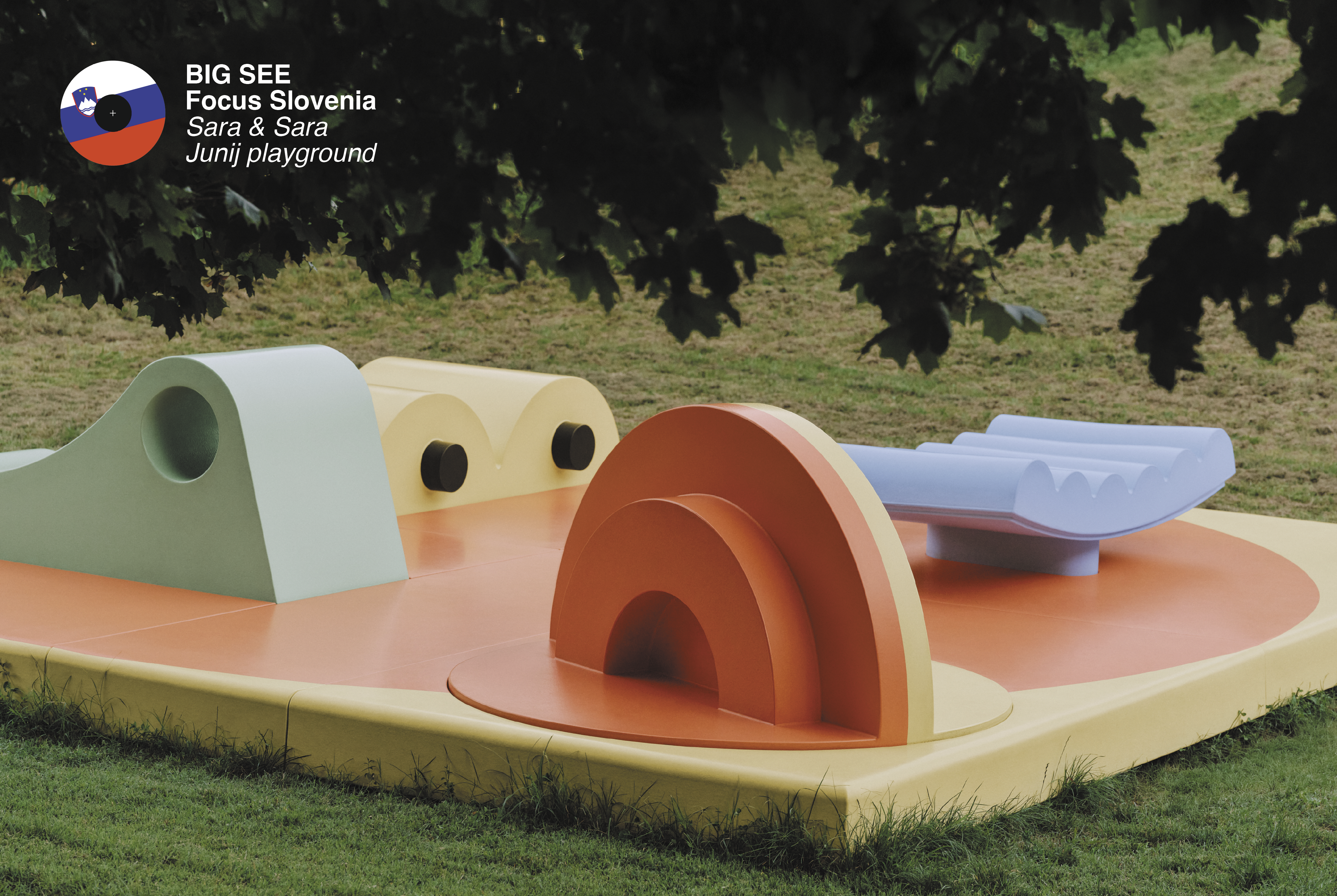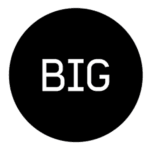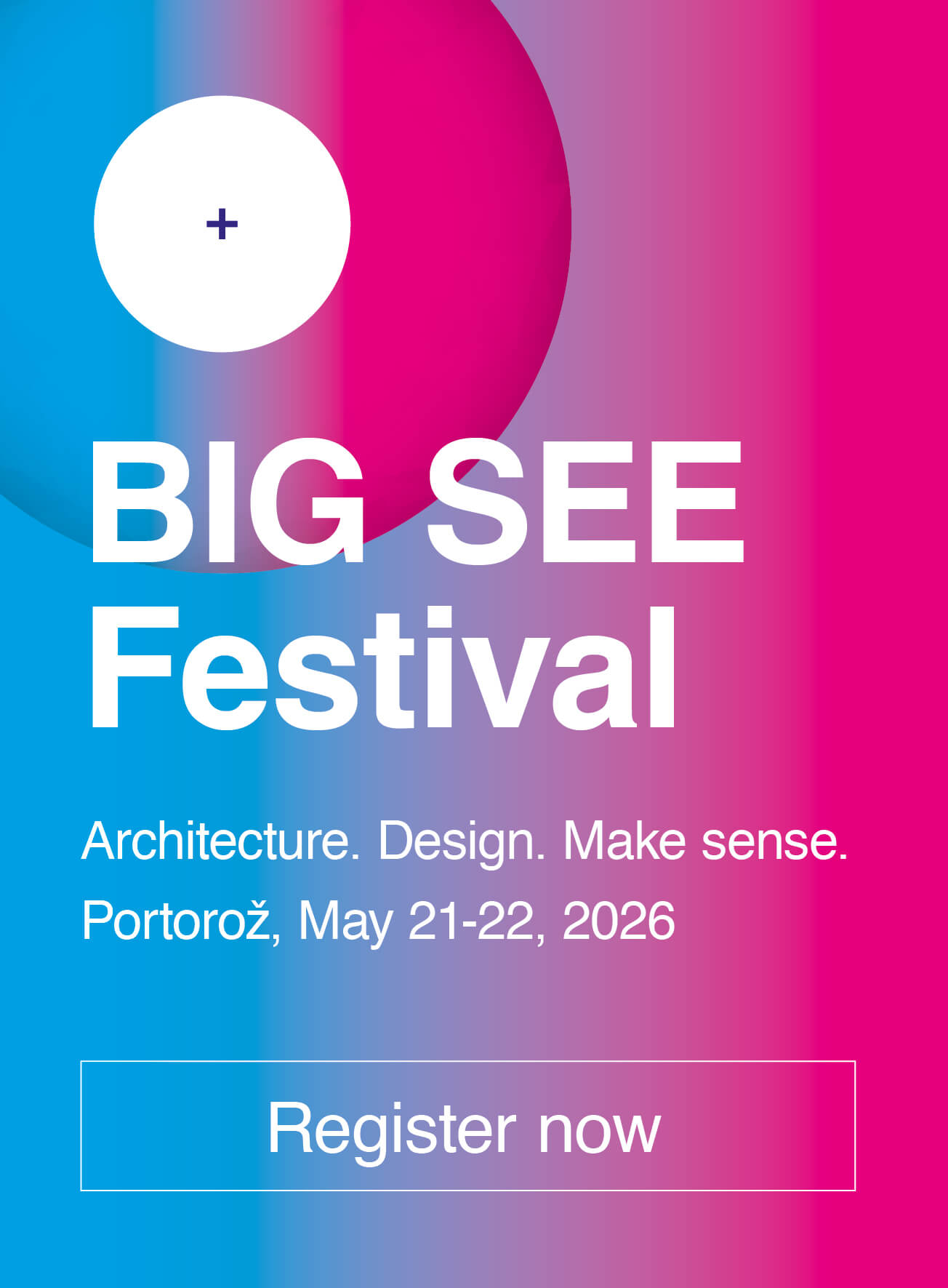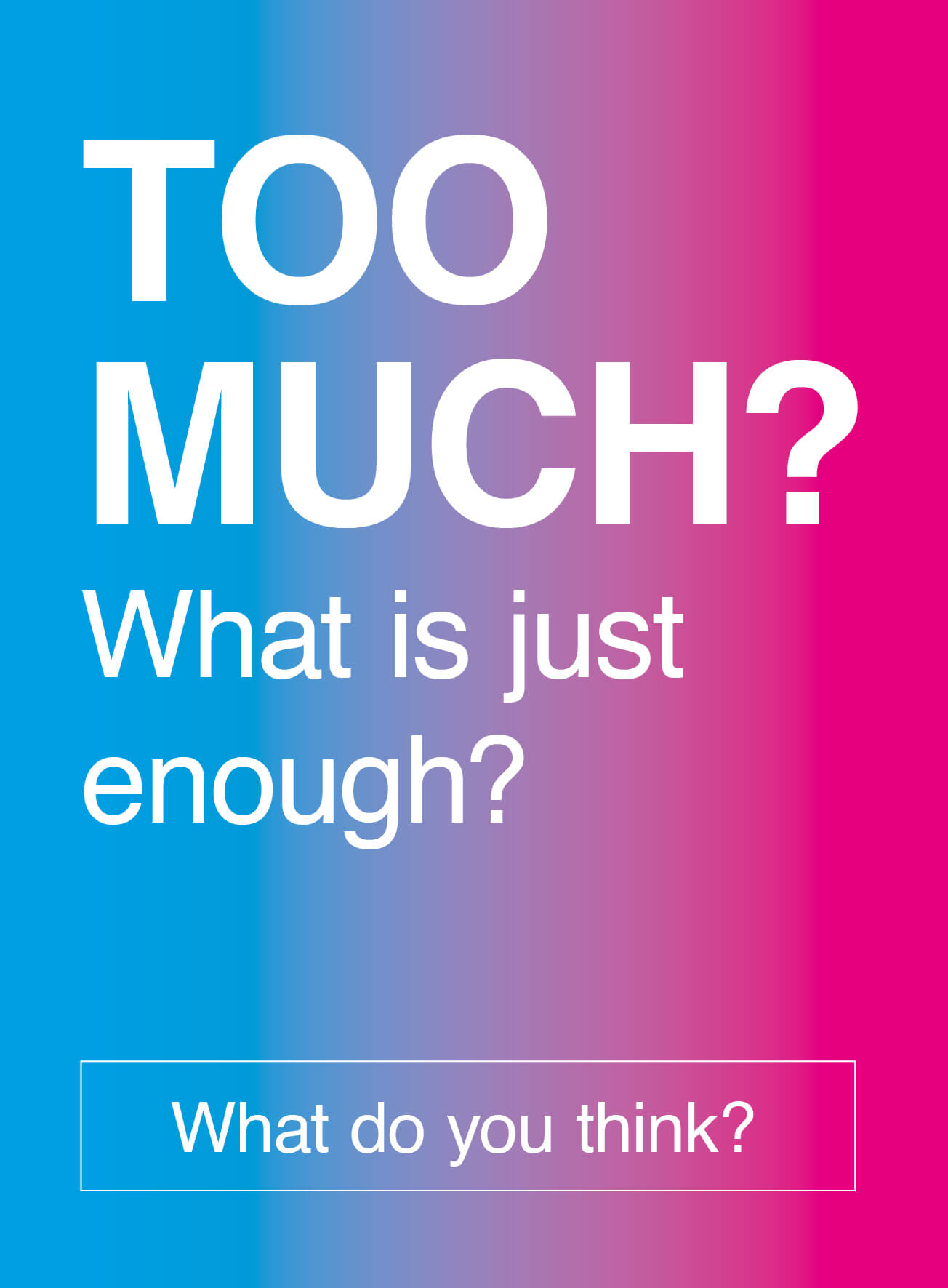3 Questions for Sara & Sara
Q: Children’s play is unpredictable. How does a designer prepare for users who won’t interact with the product “as written in the user manual”?
A: Designing for children means letting go of control. Play is messy, unpredictable, and full of surprises—and that’s the point. If we try to script exactly how a playground should be used, we rob children of the chance to invent, improvise, and make it their own. Instead of designing objects with one “correct” function, we can build play invitations—forms and spaces that suggest possibility without dictating it. The best playgrounds don’t tell children what to do; they ask, what could this be?
“The best playgrounds don’t tell children what to do; they ask, what could this be?”
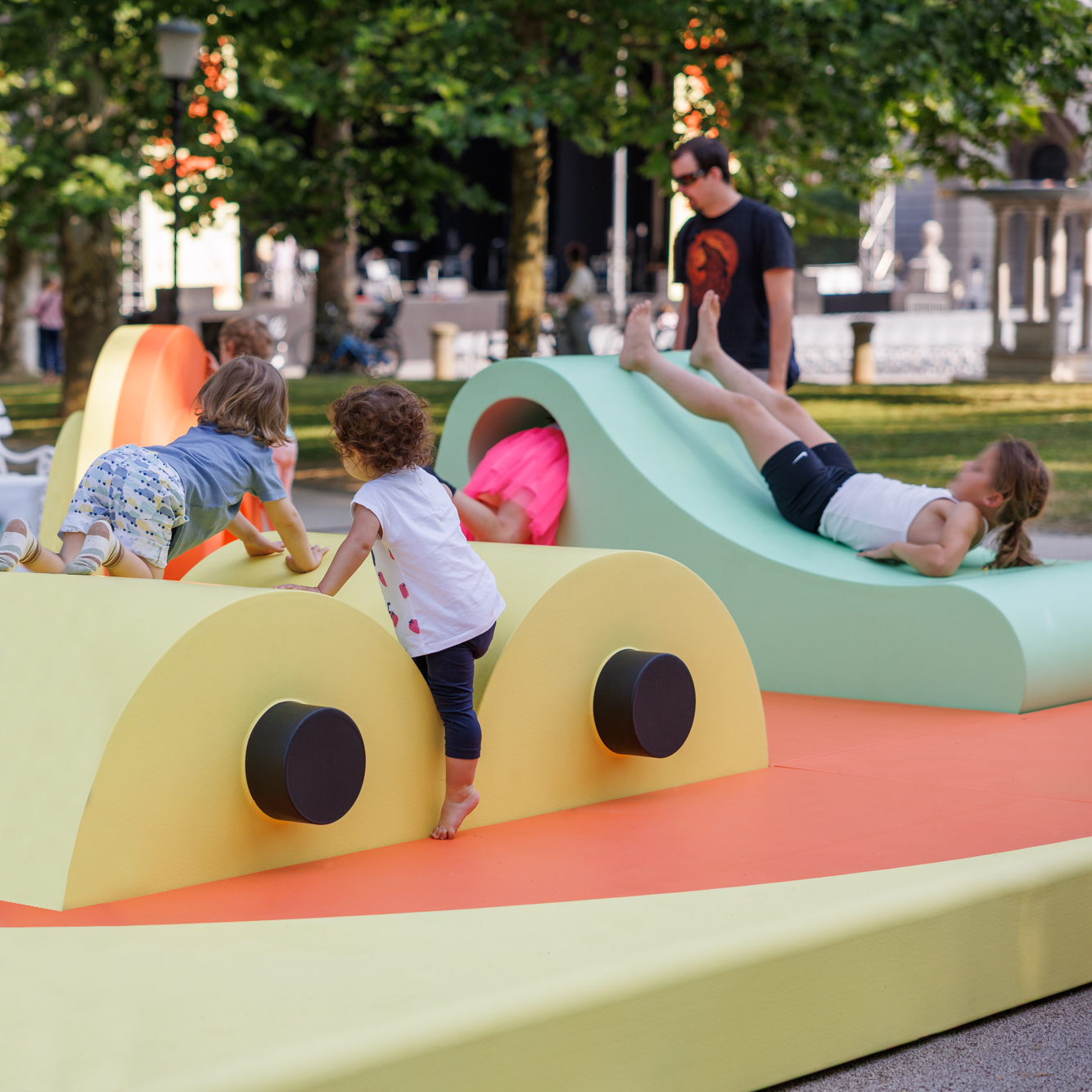
“Play lives between imagination and regulation – wild ideas on one side, safety codes on the other.”
Q: You collaborated with many partners, from graphic designers to builders and safety experts. What did you learn during the process? Was anything unexpected? How did the initial idea evolve, and is there something in the final result that turned out even better than in the early sketches?
A: Designing with manufacturers, city officials, and educators showed us that play lives between imagination and regulation. On one side: wild ideas and open-ended forms. On the other: safety codes and rules that can feel restrictive—but also make the work stronger and safer.
Watching kids play proved the point: no matter how carefully we design, they invent their own ways, bending the rules and surprising us. That unpredictability is the measure of success.
In the end, the adaptability of the modular system – its ability to work equally well at the festival and later in a kindergarten – turned out even better than initially imagined.
“Instead of designing objects with one ‘correct’ function, we can build play invitations..”
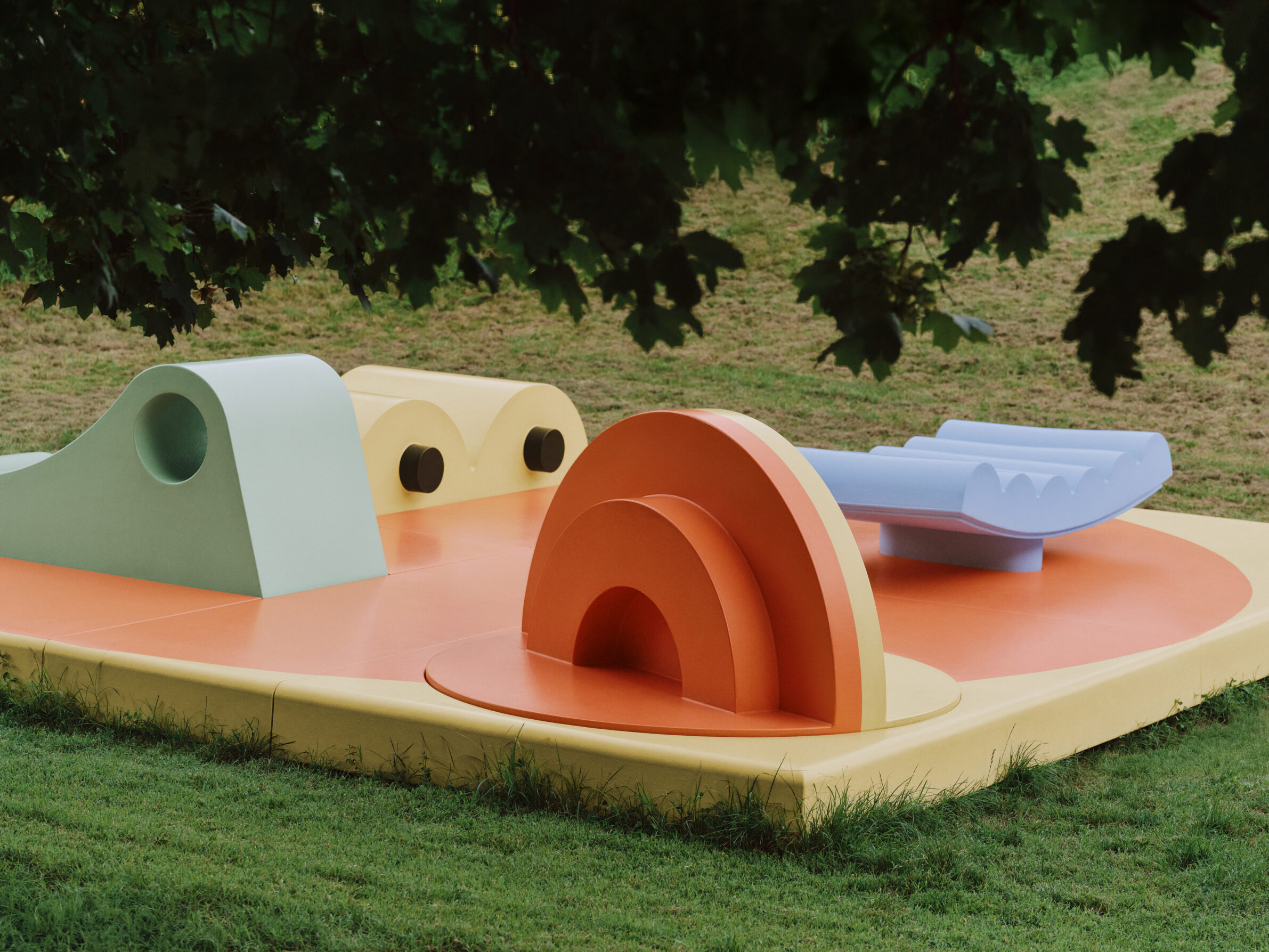
Q: Many of your projects carry a playful quality. How much play do you allow into your own creative process? Do you see playfulness as an essential part of creativity – or is design, for you, primarily a serious and deliberate craft?
A: We see playfulness as essential to creativity because it keeps the process alive and unpredictable. It lets us discover possibilities we wouldn’t have planned, and it keeps space open for surprise. The deliberate craft comes later—when it’s time to refine, to meet safety standards, to make sure the design holds up in the real world. For us, the two are inseparable: play sparks ideas, and design shapes them into something people can actually use.
“Playfulness is essential to creativity because it keeps the process alive and unpredictable..”
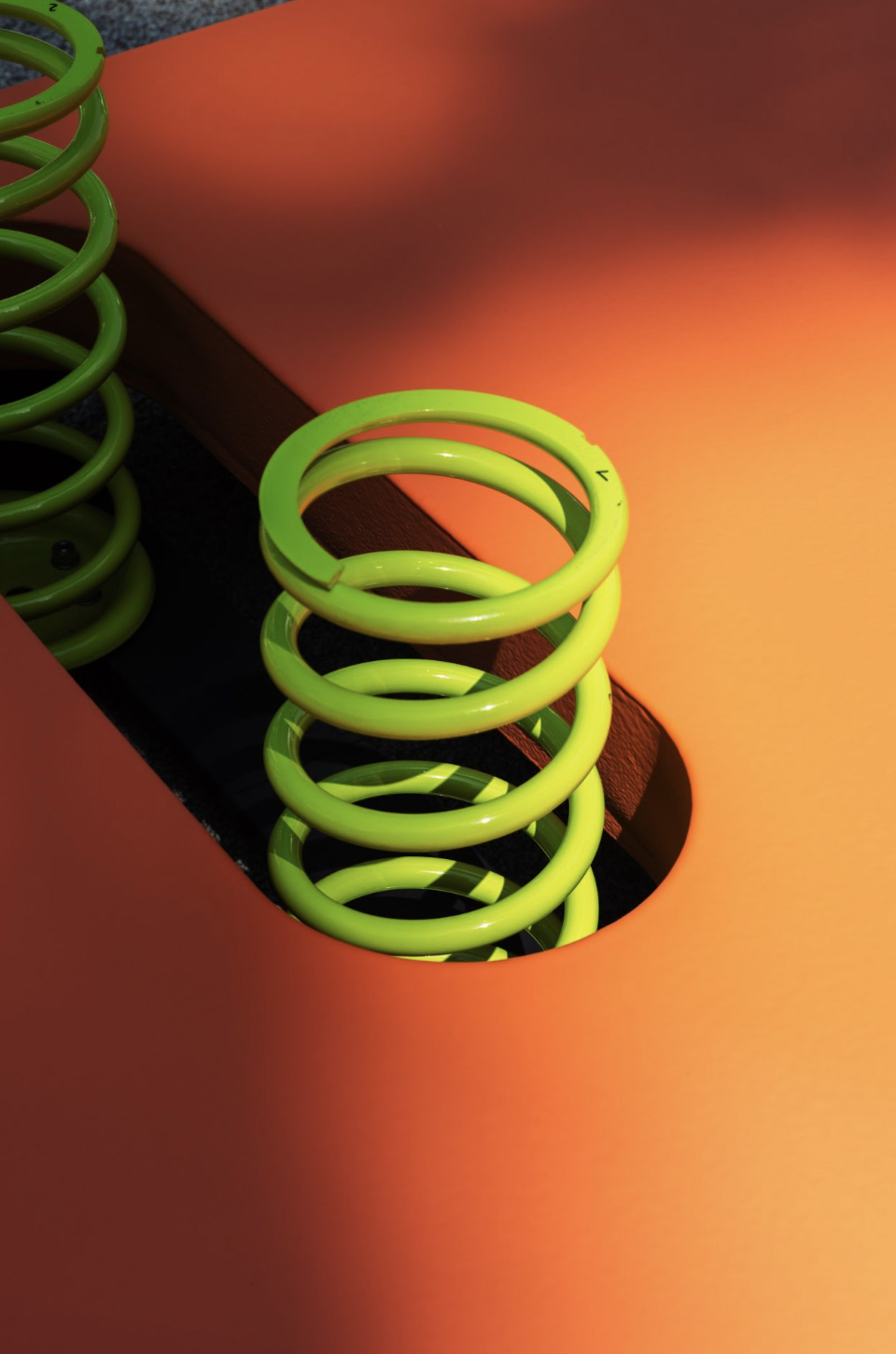
About Junij
The “Junij” playground began as a temporary installation for the Junij Festival in Ljubljana, but it was never meant to disappear when the festival ended. From the start, the idea was that it could move on, finding a new life in a kindergarten.
The design is simple and intentional: abstract, geometric forms that don’t tell children what to do but invite them to invent their own games. No instructions, no right way to play—just open-ended structures that spark imagination and movement.
Cushions coated by Sixinch are soft enough to keep play safe, yet tough enough for outdoor use. The whole system is modular—built from a set of pieces that can be reconfigured, transported, and stored with ease. One material does double duty: both padding and play object. When a piece wears out, it can be recoated or recycled, keeping the system alive and sustainable.
But beyond the technical details, this project is about access and equity. Many kindergartens don’t have safe or modern play equipment. By creating something flexible, durable, and locally made, we can bring contemporary play to more children—supporting healthy development, creativity, and community connection.
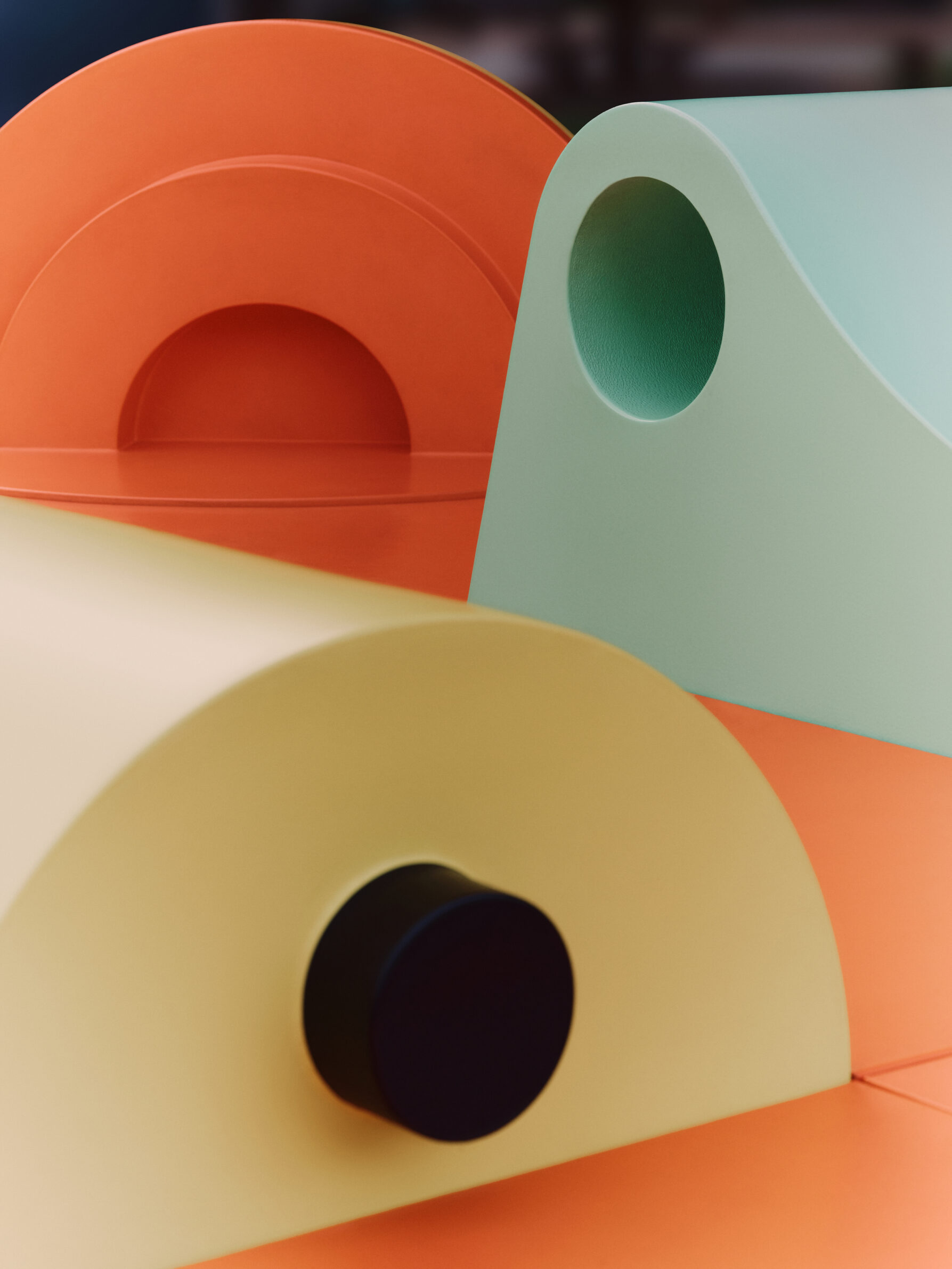
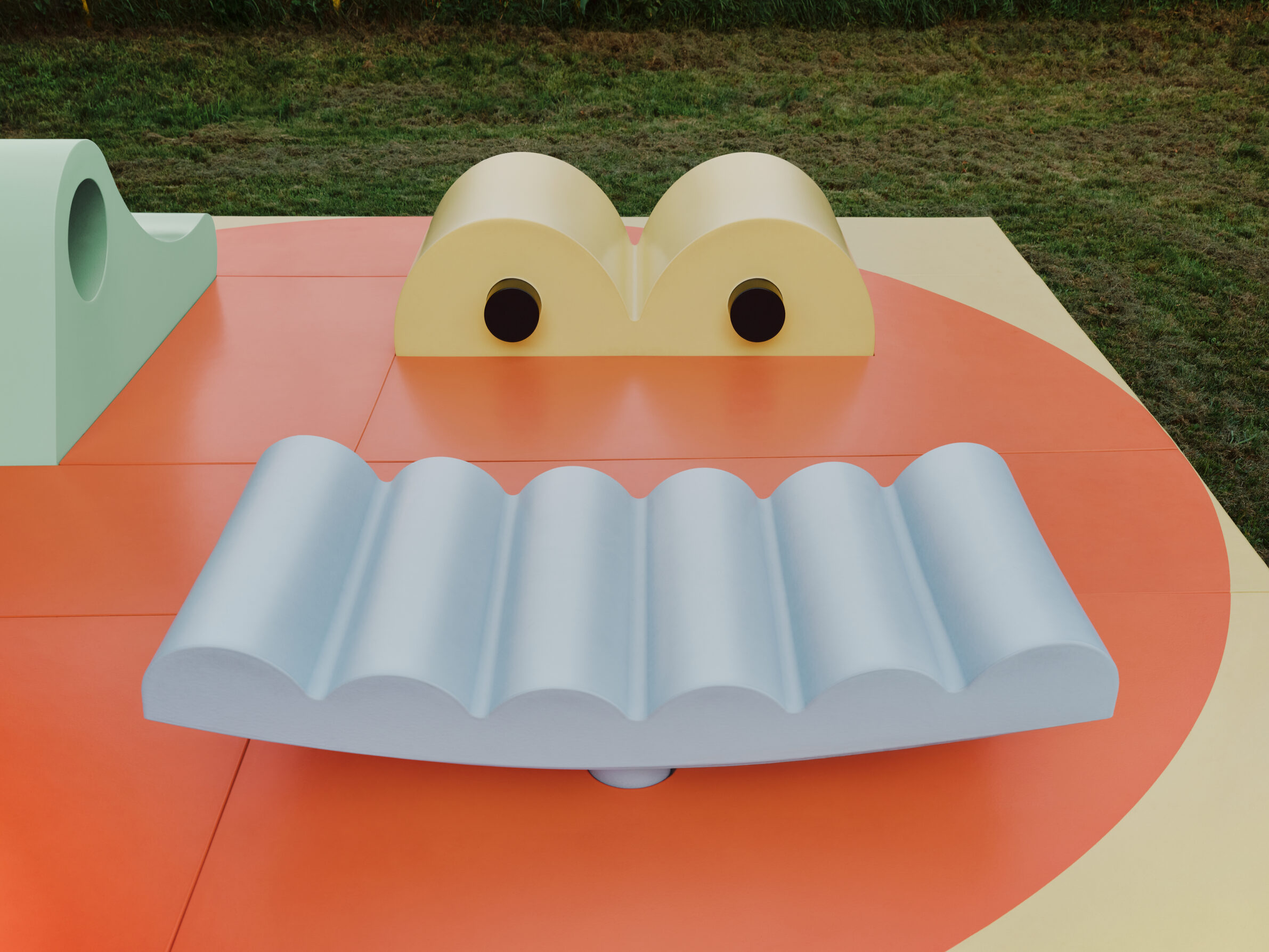
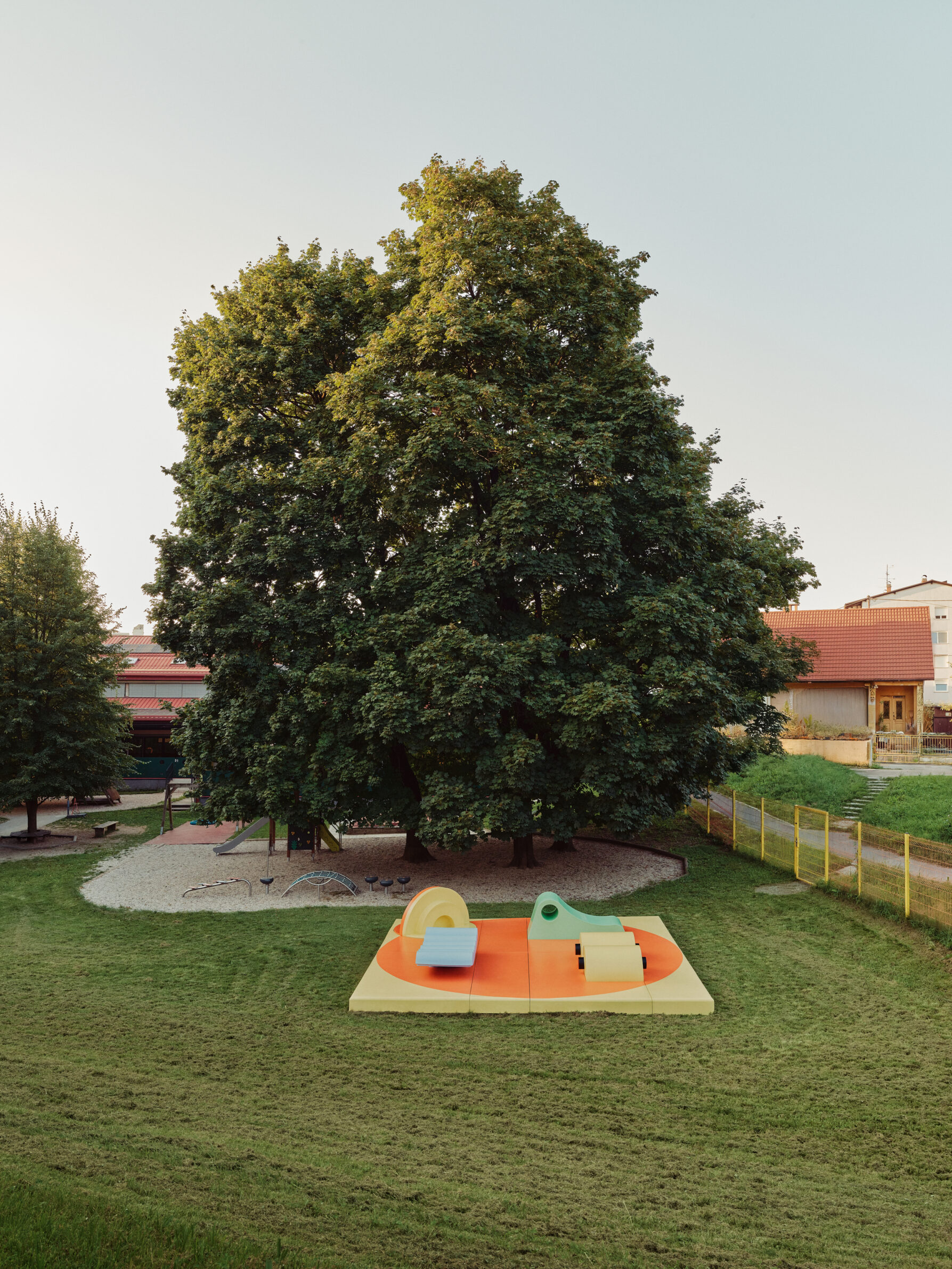
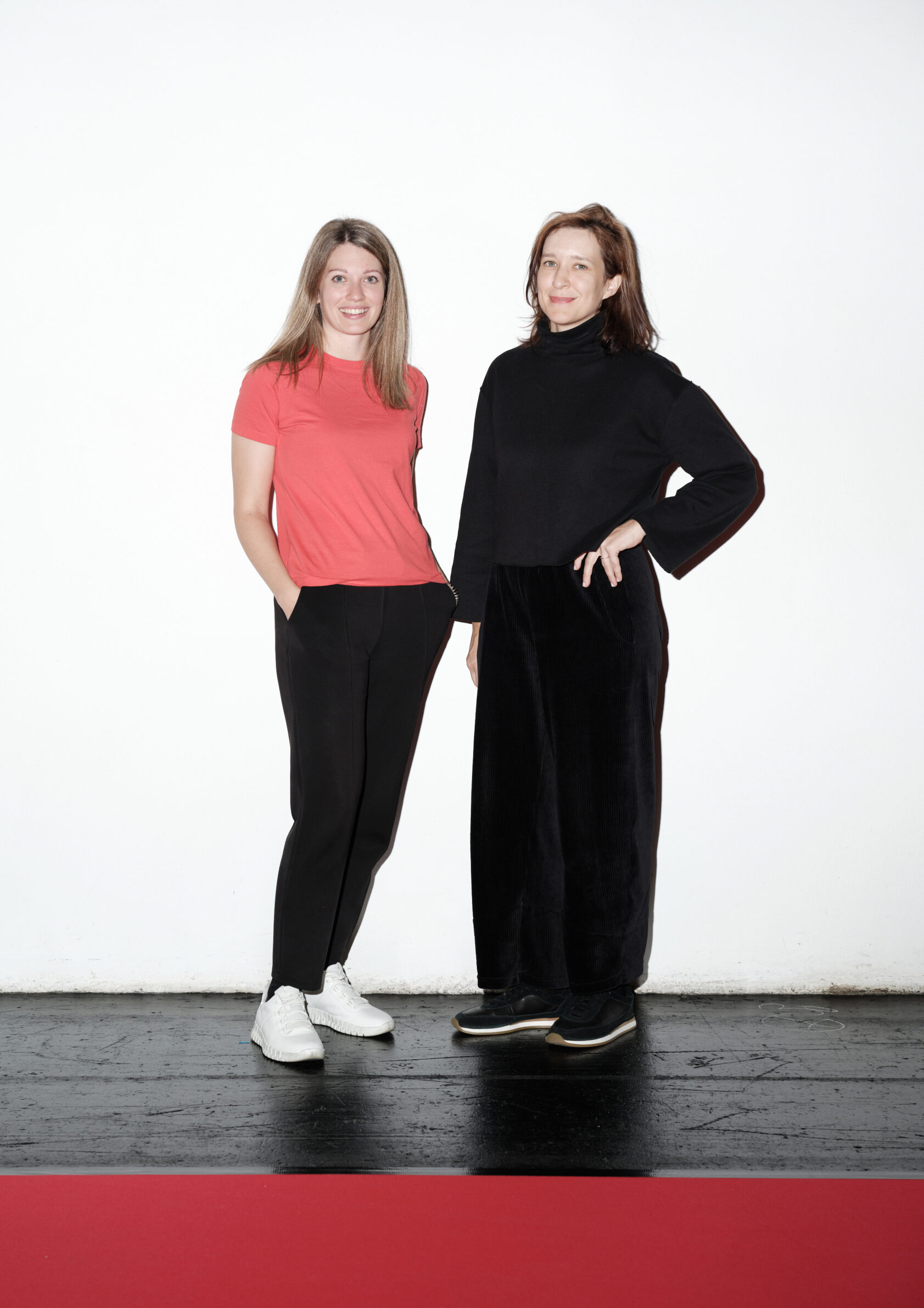
Sara & Sara is a spatial practice founded in 2022 by architects and designers Sara Badovinac and Sara Škarica. They believe space is never neutral—it shapes how we encounter stories, images, and ideas. Their work transforms content into lived experiences through architecture, objects, and installations.
They rethink conventional modes of display, treating exhibitions as dynamic environments where dialogue unfolds between people, space, and content. Their approach is both conceptual and tactile: research informs design, yet the results retain immediacy and human presence. Working across scales, they are always searching for the “AHA” moments that surprise and delight.
Collaboration is central. Working with cultural institutions, artists, and curators, they create frameworks that amplify narratives while questioning traditional formats. Their projects range from intimate installations to large-scale cultural showcases, and they often design playful, inventive environments for children.
Project
Year of production
2025
Website
Sara&Sara
Instagram
@_sara.and.sara_
Photography
Klemen Ilovar
Dasha Skibina
Sixinch
MOL
Edited by
Blažka Drnovšek


